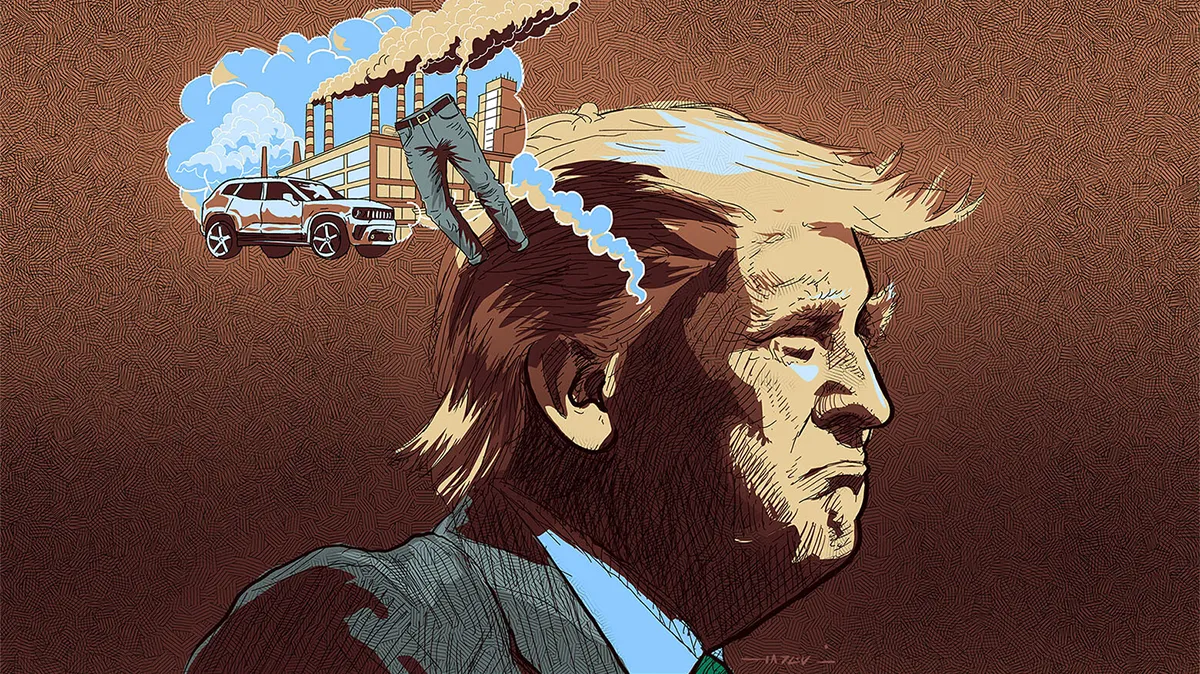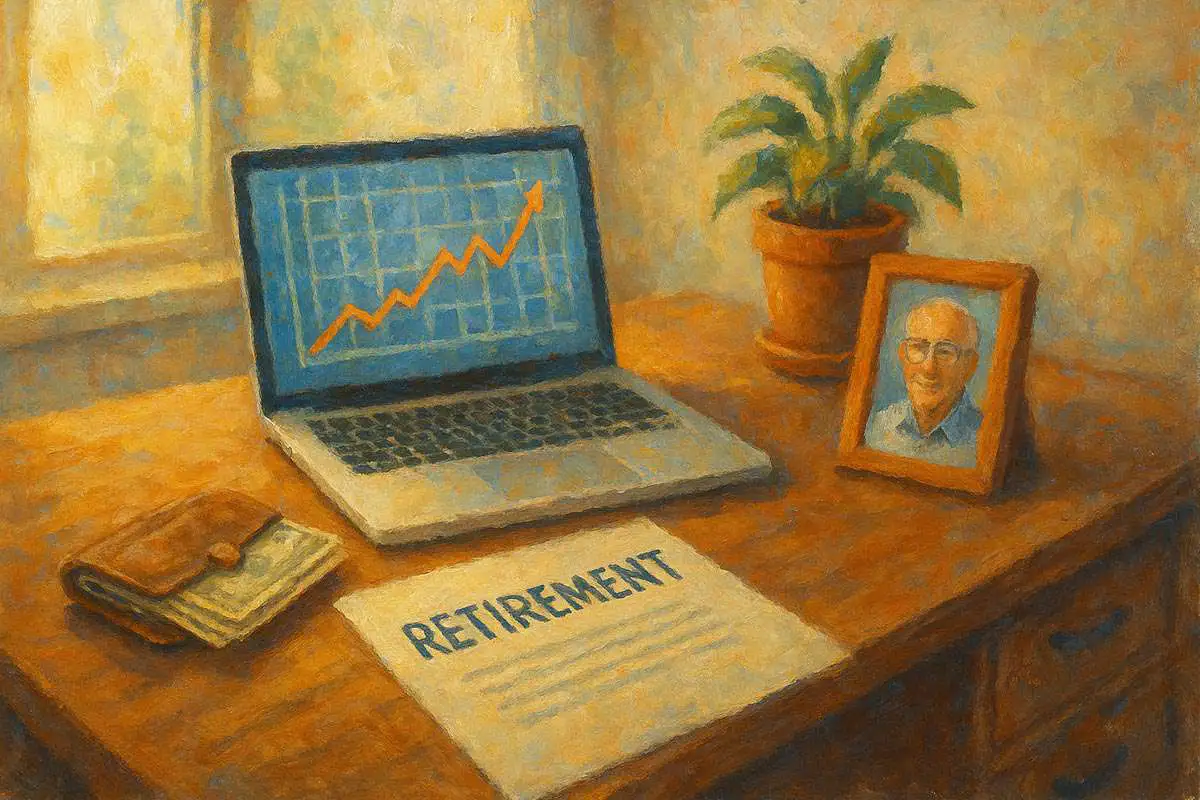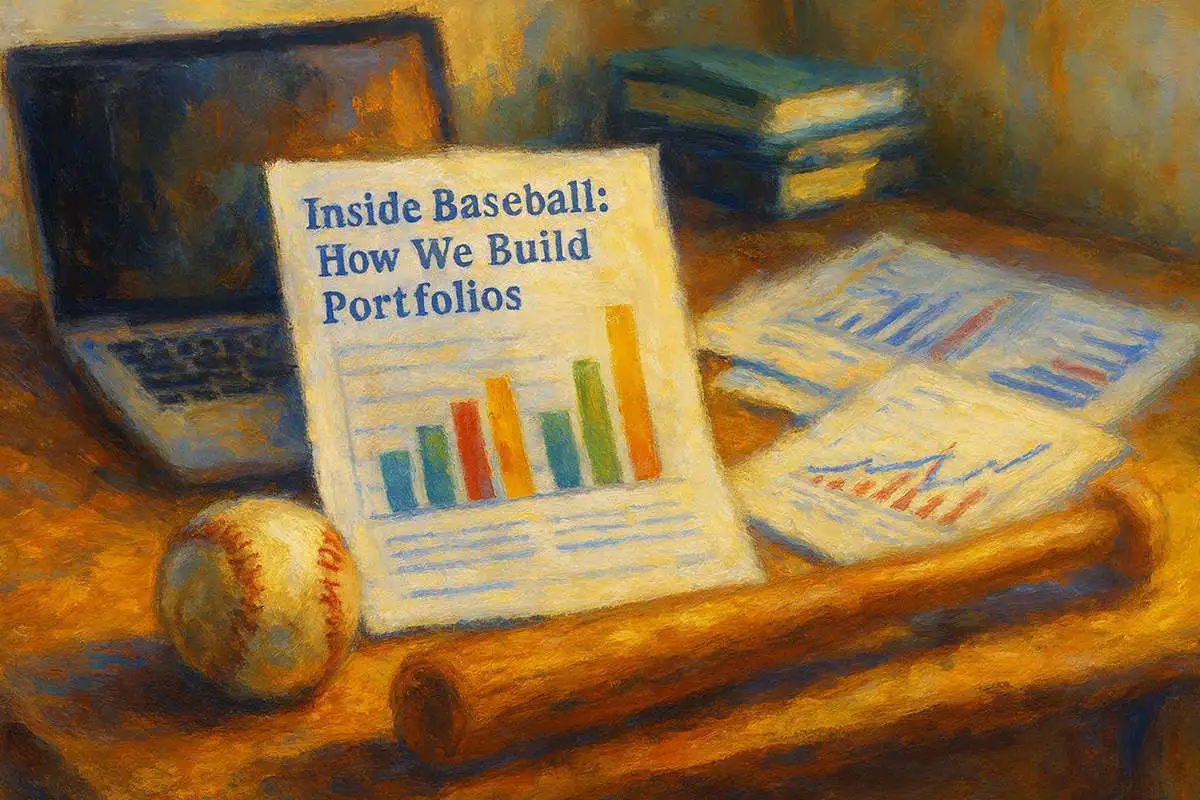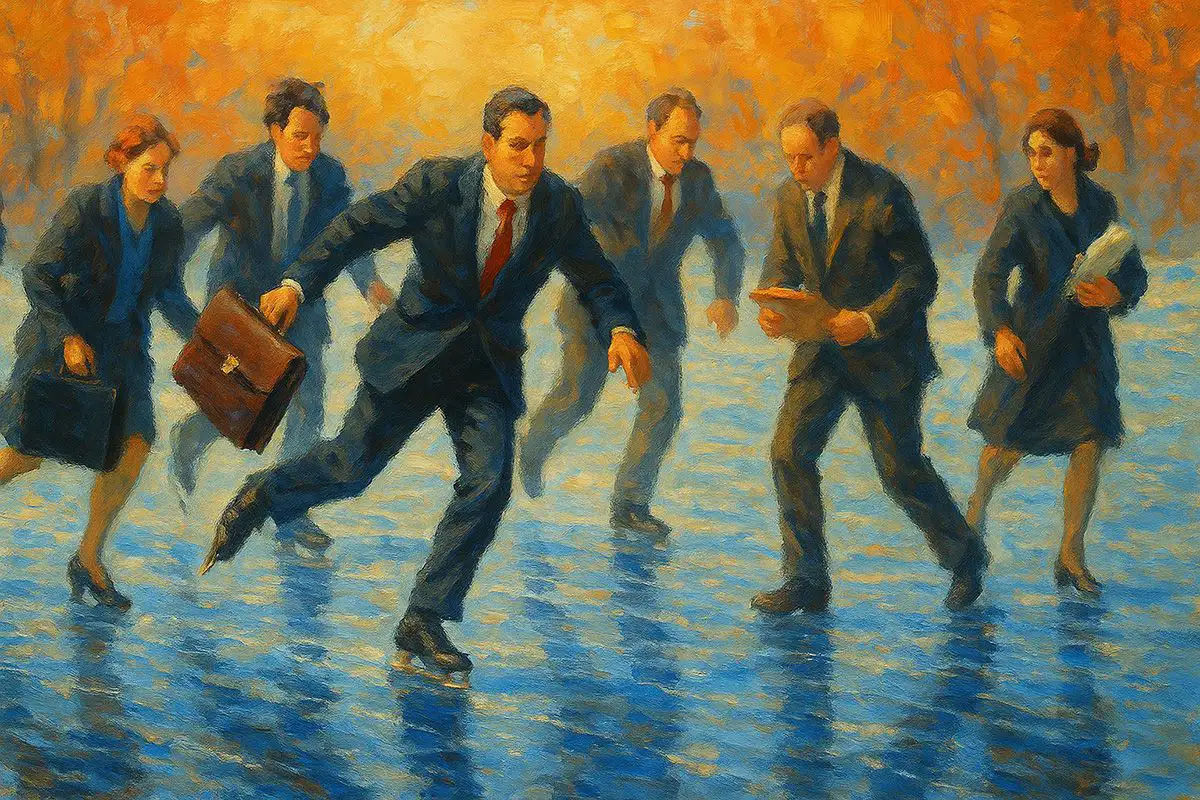I was going to share with you part two of my spring letter to IMA clients. What was supposed to be a few paragraphs turned into four pages. Consider yourself warned: This is going to read like a rant – because it is. I wrote it early this morning, as a stream of consciousness. I didn’t have time to polish and rewrite it a few times.
Before we begin, I highly encourage you to download and print the full spring letter, which we don’t usually share. Yes, I’m writing on a politically charged subject today – but my focus is still economics. If you think this is my political bias leaking through, in the letter I explain why that’s not the case. (You can download it here.)
Let’s get into it.
The world is changing before our eyes. The global order is being rewritten. The consequences of this shift? Incredibly hard to predict.
The trade war Trump ignited could end tomorrow with a tweet – or it could drag on indefinitely. My take on this is not popular.
Right now, Trump is behaving like a king. His tariff decisions are unilateral – even though the Constitution clearly places that power in Congress’s hands. He’s exploiting an emergency loophole. Why does he behave like a king? Because he’s popular, and Republicans are too scared to speak up. He prosecutes dissent with viciousness.
But Americans don’t like kings (sorry, King Charles). This isn’t Russia – despite Trump’s affection for Putin and Kim Jong Un, Americans don’t want to be ruled by a king or (a dictator).
There are few things I feel certain about, but this is one: If these tariffs continue, they will push us into a recession. Tariffs on even smaller scales have failed in the past (Smoot Hawley caused the Great Depression), and this time won’t be different. However, even if they’re rolled back tomorrow, the damage might already be done. (In the Spring letter, I discuss what we’ll do if that happens.)
Yes, I’m venturing into crystal-ball territory here – so take the following as the confidence of a gypsy reading tea leaves:
Scenario One:
Trump rolls back the tariffs. He does a victory lap, claiming Japan dropped restrictions on US car imports and France is now fine with our super-antibiotic-injected beef. He leaves in place a 10% tariff across the board. And it’s framed as a win – because hey, 10% is better than 40%, right?
The last week feels like the beginning of the pandemic (the early days, when we were told to drink bleach), except we are deliberately walking into the Wuhan lab (or wet market) and injecting ourselves with the virus. But that is the good news – Trump can end this madness as easily as he started it.
Scenario Two:
He keeps the tariffs. The economy starts contracting – not just because of the tariffs but because of the uncertainty they create. The rules are being rewritten by a mercurial king. Corporations stop hiring. Some of them begin prepping for leaner years. That means layoffs. Higher unemployment.
Trump is already starting to lose support from some anti-Harris voters. And the MAGA crowd, thrilled they won’t have to pay taxes on tips and overtime, may soon realize that in order to pay taxes, you actually need a job.
They’ll also start remembering that, for all his branding, our billionaire president did go bankrupt a few times. Not all his business ideas – Trump Steaks, Trump University – were pure genius.
As Trump’s popularity fades, so does his ability to rule like a king. Republicans will begin to feel pressure from their constituents. Faced with a lose-lose choice, they’ll start voting against the king’s policies. And if Trump refuses to roll back tariffs as the economy deteriorates, Congress may strip that power from him and reverse the tariffs themselves.
So far, Trump has ignored the stock market. As I write this, it’s down in the teens year to date. Can he ignore a 20–25% decline? I doubt it.
Scenario Three:
There’s another line of thinking: Trump is a Machiavellian genius.
The US has $37 trillion in debt, with $10 trillion rolling over this year. What if pushing the economy into a recession is part of the plan? A recession forces the Fed to cut rates. Bond investors – who ultimately control the 10-year yield – start seeing deflation on the horizon and bring yields down. Mortgage rates, which track the 10-year, follow suit.
This is exactly what’s happening – Trump’s a genius!
But hold on – there’s a big risk baked into this strategy. We’re already running a 6–7% budget deficit at full employment. What happens in a recession? Tax revenues fall – bad for deficits. Government spending increases: bailouts, unemployment benefits, stimulus checks. That’s also bad for deficits. Eventually, the bond market might wake up to a hard truth: More debt means more money printing. That’s when things get messy.
Historically, this type of economic strategy has failed. I see no reason why this time will be any different. The real question is how long it takes before the president – or Congress – reverses course.
Now let’s unpack the “bring manufacturing back to America” narrative.
Tariffs can be a useful tool – they are a good solution for some problems, but not all problems. They won’t magically restore US manufacturing. There’s a fundamental misunderstanding about what kinds of jobs would come back, and why they left.
We’re not going to start making Nike shoes and T-shirts in Iowa. Those jobs pay $2 an hour, and Americans don’t want them. And if those factories did return, they’d be run by robots – employed by one guy flipping the switch.
Many jobs moved overseas because of differences in environmental regulations. Take rare earth minerals – crucial for robotics and semiconductors. They’re not rare. We could mine and refine them here. We just don’t want to – too toxic.
We’re not going to grow coffee in the US, either. And we shouldn’t have to try.
There’s a legitimate argument for global trade and comparative advantage. We make software. Colombia grows coffee. Mexico makes tequila. But the issue is more nuanced. Trade hasn’t always been fair. Trump’s not wrong there. Our trading partners restricted our exports. We hollowed out parts of our manufacturing base while ignoring that imbalance. That deserves attention. But pretending we can rewind to 1955 isn’t the answer.
Trump romanticizes the 1950s and ’60s, when America was a manufacturing giant. But that was a unique moment in time – when the rest of the world was in ruins, still recovering from WWII. We can’t go back there. And we shouldn’t.
Americans don’t want those jobs.
We often justify illegal immigration by saying, “Mexicans do jobs Americans won’t.” That’s true – to a point. Americans don’t want to climb roofs for $15/hour. At $30 or $40? Maybe they would.
I visited Huntington Ingalls last week. They build submarines and aircraft carriers for the Navy. Their biggest problem? They can’t hire enough people. Starting pay: $24/hour. And yet, if you’re 20 and choosing between welding in all weather for $24 or working at 7-Eleven for $18, a not surprising number choose selling Slurpees.
The government will inject billions to raise wages and attract workers. But Huntington Ingalls’ long-term solution isn’t labor – it’s automation.
Walking through their shipyard felt like stepping into a Soviet-era facility in Murmansk. No red flags, but very little automation. Why? Because you can’t justify the capital investment if you’re building one submarine every two years, or one aircraft carrier a decade. This is about to change. (For context: Korea builds cruise ships in 2–3 years.)
The future? Marry AI with automation and you get factories run by robots, not people.
This whole discussion is full of nuances. Here’s one more: Our trade imbalance is both a bug and a feature of the US dollar being the world’s reserve currency. The dollar is arguably our biggest export. That privilege has historically subsidized American life – foreigners parked their hard-earned money in our Treasuries, which led to a lower cost of capital, lowering mortgage rates and car payments through artificially low interest rates.
But as trade deficits shrink, so might the dollar’s dominance. I’ll discuss that more in tomorrow’s letter (or you can read it here).
Let me end this rant on a hopeful note.
The faster the market declines, the faster we may see the transition from king back to president. And the faster these tariffs get rolled back.
What happened to Biden after the first 2024 debate could happen to Trump just as fast. Biden went from “He’s the sharpest he’s ever been” to “He’s a senile old man” in a matter of hours. Today, MAGA thinks Trump is playing 4D chess. Soon, they may realize he’s just playing golf. And the faster they realize that, the faster this country moves forward.
One Final Reminder: Bull markets stretch investors’ time horizons to infinity. Bear markets shrink them to days. If your time horizon isn’t 7–10 years, you shouldn’t be in stocks.
The price quote on your portfolio today? It’s just an opinion – not a final verdict.
Most of your return is made during bear markets. You just don’t realize it at the time.
Key takeaways
- Trump’s tariffs represent a unilateral power grab through emergency loopholes, where the president “behaves like a king” because Republicans are “too scared to speak up”—but Americans’ fundamental rejection of monarchy may ultimately force a reckoning.
- If Trump’s tariffs continue, they will “push us into a recession” with historical precedent (Smoot-Hawley) confirming this pattern—the best hope is for a face-saving partial rollback that allows Trump to “do a victory lap” while mitigating economic damage.
- The fantasy of restoring American manufacturing through Trump’s tariffs misunderstands both economic reality and workers’ preferences—we won’t be “making Nike shoes in Iowa” for $2/hour, and even high-paying manufacturing jobs ($24/hour at shipyards) struggle to compete with easier service work.
- Trump’s tariffs might be clever if they’re intended to force a recession that lowers interest rates, but that strategy ignores the devastating impact on budget deficits—already at 6-7% during full employment—which would explode with declining tax revenues and increased government spending.
- The market damage from Trump’s tariffs could accelerate political change as “MAGA thinks Trump is playing 4D chess” but may soon “realize he’s just playing golf”—yet investors should remember that “most of your return is made during bear markets” even if time horizons temporarily shrink.









I find this to be one of the most cogent summaries of the actions of the President (can’t say ours, cause he ain’t mine) in a blind and destructive fashion that i have read. i just wish that my otherwise reasonably intelligent MAGA friends would even be open to reading this, but past efforts have shown how futile that is with that group. I know you will continue to write as you believe, and i look forward to your messaging on all fronts. As an aside, i have purchased multiple copies of “Soul In The Game” and given them to close friends, it is a wonderful read.
I somehow came across your emails, and although I am not an economist, I follow the markets somewhat closely, to ensure that my small nest egg is given the attention that I do not believe a professional manager would be able to provide. This article really brings into focus the issues we are facing today. Since I see myself as an investor, rather than a trader, I am on the fence wether to go fully risk off at this point, or just continue to look for undervalued equities.
Spot on Vitaliy. Reputational capital, once dissipated, cannot be easily regained. America has become untrustworthy to its friends and allies. Hard to see how the tariffs will ultimately help US citizens in the way the President claims and predicts, Victor Davis Hanson notwithstanding. America has breached existing legal treaties with Canada, signed by the President during his first term, on the basis of the fentanyl “emergency” in America, without Congressional approval. Shameful and deceitful. We will not forget.
I was going to leave a lengthy comment and then I read Tari Trowbridge’s comment- bravo! I agree – why state Main Street media lies!
At least you admit that you don’t know the eventual outcome.
Many Americans are fed up with the mismanagement of our hard earned money, paid by mandatory taxes to the government, and wasted.
I was reading along and not necessarily agreeing on everything, but with you, until you revealed your TDS by saying we were told to drink bleach and COVID came from a wet market, both of which were untrue – and unnecessary to your argument.
You’re hoping that Congress gets us out of the tariff mess, but that’s a pipe dream. They have gotten us in this mess and neither side has shown any fiscal discipline since the Clinton/Gingrich combo.
I listened to Victor Davis Hanson talk about the Great Depression/Smoot Hawley this morning and he pointed out that the stock market decline happened in 1929, the act was 1930 and not executed until 1931 and, as you point out, the world was a very different place.
It’s unfortunate that no one in our country has any idea how to fix anything (as evidenced by the lack of alternative ideas) and also has no patience for anyone trying to – no one knows how this will end, but the path we were on was unsustainable, with no end in sight and here we find ourselves.
I received a lot of feedback on my last rant about tariffs. Some folks accused me of being pro-Trump, while others reading the same email thought I was anti-Trump. I smiled.
Two clarifications:
First, no—we were not literally told to drink bleach during the pandemic. My previous comment was facetious. Trump suggested investigating the possibility of injecting disinfectant. I was ranting, and it sounded funny.
Second, the Smoot-Hawley tariffs were implemented after the crash of October 1929. A few months later, unemployment stabilized briefly at around 9.3%, but then rose significantly afterward precisely because of these tariffs, peaking at 25.2% in 1933. President Hoover had good intentions with these tariffs; he aimed to “protect” American workers. Unfortunately, the opposite happened—unemployment worsened dramatically. Tariffs exacerbated the economic situation. We should always judge politicians not by their intentions but by the outcomes of their policies.
I recommend watching this short video featuring Thomas Sowell on the subject: https://www.youtube.com/watch?v=AQQon4tjlSA
I think you are missing VK’s point on the early days of the pandemic. A lot of dust in the air and a lot of twaddle.
As for your comments on the market, I afraid it is untrue.
S&P 500 TR in
1929: -8.42%
1930: -24.90%
1931: -43.34%
1932: -19.32%
1933: +53.99% (Thanks to the enlighted measures of the SH act I guess)
Good points. Congress will do nothing about the trade inequities with the rest of the world. I’m a healthcare provider and not a financial guru. I would ask why if tariffs are such terrible policy, why is it that other countries have
tariffs on US goods for decades and seem to do fine economically?
We’re told every day that Trump’s out over his skis. I don’t know. What should he do? Continue Biden policies? I’ll give Trump the benefit of my patience cause Biden did nothing but borrow and spend. Correct me if that is wrong.
Affection for Putin? Come on!
Wet Market? Intelligence agencies overseas and here in the US have thought the virus came from a lab for some time. Whether the agencies are to be trusted is a debate for another day.
Of course the untested “vaccine” we were brow beaten to take without questioning has proved to be not effective or safe. How can we believe “the science” after that disaster?
And that’s my rant.
Vitaly
As I have told you in past comments, Hanging on to so called good stocks in a market downturn like now makes no sense. Even if it eventually recovers, 1929 drop took 25 years to recover but look what money bought in 1929 compared to 1954 when the Dow reached the same levels as in 1929. Markets are cyclical, going up and down in cycles and the only way to make money in markets as I have and beat inflation is by knowing and trading the markets. When they are way overvalued like in early this year they must be sold and the money kept in TLT or 3 mo T-bils. I expect a counter trend rally soon but this will not last as the overvalued cycle historically turns into an undervalued cycle when it will be time t cash in bonds and T-bills to buy undervalued stocks. This is the the way markets have worked since 1900.